#vertebrates
Text
This is from last summer (I found it while trying to clean up browser tabs--oops.) Anyway, it's one of many examples of critically endangered species showing an upturn in population with support. The Devils Hole pupfish is particularly imperiled because it is only found in one flooded cavern in Nevada's Amargosa Desert; the species is likely descended from fish that were washed in there by flooding thousands of years ago, and have managed to eke out a living in the hot, oxygen-deficient water ever since.
This is one of the first species ever listed under the U.S. Endangered Species Act. Devils Hole is threatened by groundwater depletion from well drilling, and after the pupfish's ESA listing there were numerous legal battles between conservationists and farmers over water usage. Water levels reached their lowest point in the early 1970s, but have been slowly rising since then.
Scientists are excited because the current wild population (at least as of last fall) is at 263 fish. That's up from just 35 in 2013, the lowest recorded population ever. There are a few hundred more in captivity, being used to breed more young for reintroduction. The hope is that this fall's wild count will break 300, a good sign for the world's most endangered fish.
By the way, THIS is the entirety of the Devils hole pupfish's habitat, the only place in the world where they are found:
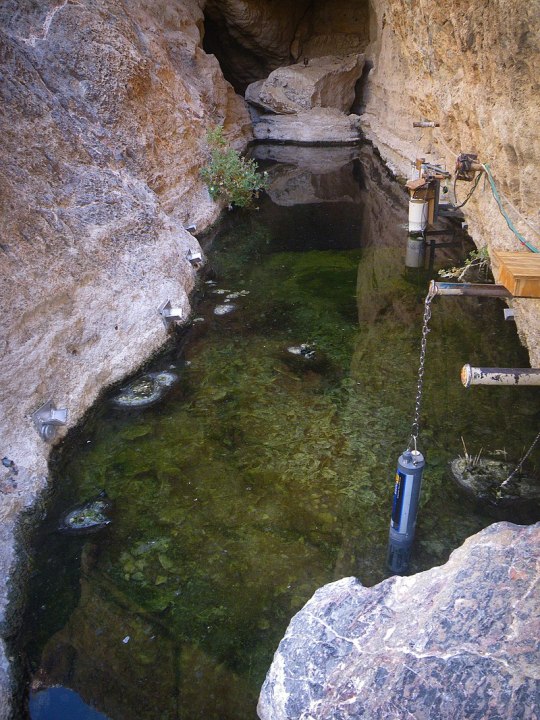
#Devils Hole pupfish#Devils Hole#fish#icthyology#vertebrates#animals#wildlife#endangered species#endangered animals#extinction#nature#ecology#environment#conservation#science#scicomm#Nevada#United States#Endangered Species Act#Endangered Species List
1K notes
·
View notes
Text
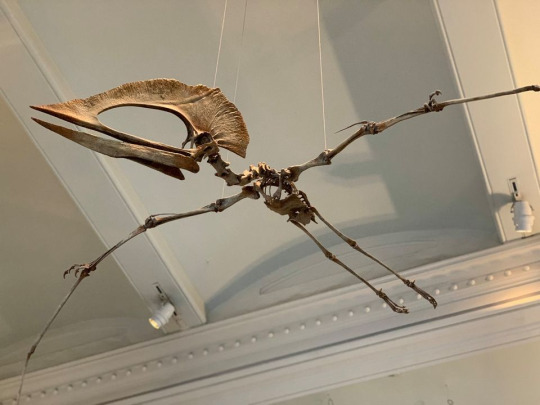
Happy Fossil Friday! Let’s fly back in time to the Cretaceous some 110 million years ago to meet Tupuxuara leonardii. This flying reptile had a wingspan of about 15 ft (4.5 m) and a huge fan-shaped crest. But why the elaborate headgear? Scientists think that pterosaurs could have used their distinctive crests to steer during flight, to recognize members of the same species, or to attract mates. Like the crests of some modern birds, they may have also been brightly colored.
Photo: © AMNH
#science#amnh#museum#fossil#nature#natural history#animals#paleontology#ancient animals#did you know#fact of the day#fossil friday#pterosaur#vertebrates
620 notes
·
View notes
Text

Clownfish at Osaka Aquarium Kaiyukan
#fish#fishes#clownfish#aquatic animals#animals#marine biology#nature#wildlife#nature photography#photography#mine#ecology#naturalist#vertebrates#asia#japan#aquarium#zoo animals#zoo
557 notes
·
View notes
Text

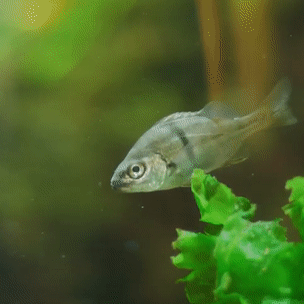

Juvenile Fish Explore the Enchanted Kelp Forest | The Critter Corner
154 notes
·
View notes
Text
Echinoderms (starfish, urchins, sea cucumbers) are more closely related to vertebrates than mollusks (octopi, snails, clams).
Mollusks are more closely related to arthropods (bugs, crustaceans) than vertebrates.
I've literally never given this any thought in the past, but I'm still surprised.
#taxonomy#phylogeny#evolution#biology#evolutionary history#mollusks#vertebrates#arthropods#echinoderms#life
637 notes
·
View notes
Text
Mod 2 General Topics
Types of Fins
Fins are thin, broad folds of integument internally supported by fin rays, they aid in locomotion in various ways depending on the type of fins.
There are 2 kinds of adult fish fins: unpaired median and paired lateral.
Unpaired median fins include 1-2 dorsal fins along the mid-dorsal line, a ventral anal fin behind the anus/cloaca and a caudal fin around the tip of the tail.
Paired lateral fins include pectoral fins anteriorly and pelvic fins posteriorly. Pelvic fins are called thoracic when located below the pectoral fins and abdominal when located just above the anus. Absent in some.
Under unpaired fins there are many types of caudal fins. Caudal fins are well developed in most fish because of its important contribution to forward propulsion during swimming. The 3 main types are: diphycercal, heterocercal, and homocercal.
Diphycercal Fins:
The most primitive, not exhibited by many living fish.
Vertebral column extends straight back to the tip of the tail, dividing the fin symmetrically and equally into the dorsal and ventral lobes.
Occurs in cyclostomes, primitive sharks, and lungfish.
Presence of diphycercal tail in developed fish is due to secondary modifications.
Heterocercal Fins:
Intermediate type.
The caudal fin is strongly asymmetrical.
Vertebral column bends upwards and reaches up to the tip of the more prominent dorsal lobe.
Characteristic in bottom feeders with a ventral mouth, the stroked of the large dorsal lobe directs the fish downwards.
Occurs in modern sharks.
The opposite, a large ventral lobe, is found in flying fish to propel them upwards. This type of fin is called hypocercal.
Homocercal Fins:
The most advanced type and the most common.
Characteristic of most higher bony fishes.
Externally symmetrical but internally asymmetrical.
The original dorsal lobe or epichordal is suppressed, the original ventral love is developed into a single or 2 symmetrical lobes.
Characteristic of fishes with a terminal mouth, its strokes force the fish straight forward.
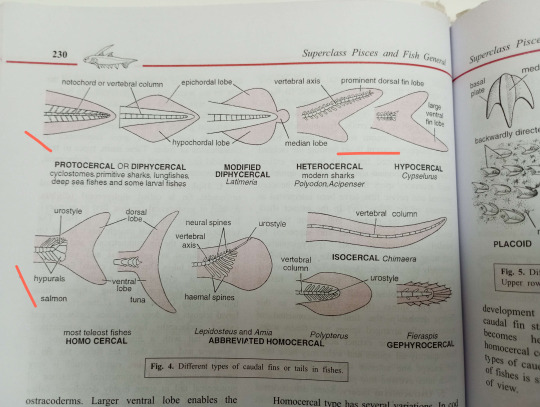
Types of Scales
There are 5 types of dermal scales: Cosmoid, Placoid, Ganoid, Cycloid, and Ctenoid.
1. Cosmoid Scales:
Does not occur in living fish, only fossilized fishes.
2. Placoid Scales:
Characteristic of sharks.
Each scale has a backwardly directed spine arising from a round or rhomboidal basal plate embedded in dermis.
Spine is enamel-like and basal plate is of dentine-like bony material.
A pulp cavity inside the spine opens through basal plate.
Placoid scales are closely set together in skin; giving a sandpaper like texture.
3. Ganoid Scales:
Thick, rhomboidal, or diamond shaped plates closely fitted side by side. Tile like, provide a bony armor to the fish, might overlap in some.
Characteristic of holosteans.
4. Cycloid Scales:
Thin, flexible. translucent plates. Circular in outline and thicker in the center.
Marked with several concentric lines of growth which can be used to determine age.
They overlap each other, each scale is embedded in a small pocket of dermis.
Found in lung fishes, carp, cod, etc.
5. Ctenoid Scales:
Similar to cycloid scales in form, structure, and arrangement.
But is more firmly attached, their free hind parts with are not overlapped, bear numerous small comb-like teeth or spines.
Characteristic of modern higher teleosteans like perch and sunfish.
There are some intermediate types of scales found in between cycloid and ctenoid, and some fish like flounder have both.
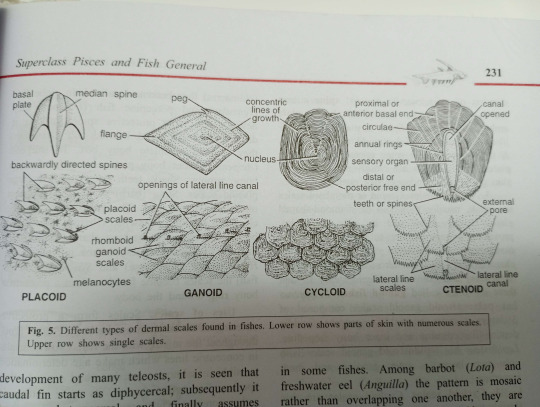
Neoteny and Paedogenesis
Neoteny refers to the retention of a larval or embryonic trait in the adult body. For example the retention of larval gills in adult salamanders.
Paedogenesis refers to the development of gonads and or production of young by an immature larval animal. Examples are scattered in several groups or animals such as gall fly, liver fluke, and salamanders.
Neoteny emphasizes the retention of larval traits in the adult body while paedogenesis stresses the development of adult like gonads in the larval body.
The best example of neoteny and paedogenesis is ambystomata. Normally they live through an aquatic larval stage and transform into an air-breathing terrestrial adult. However, under certain circumstances, the larvae does not undergo metamorphosis, retains it's gills and aquatic nature, but becomes sexually mature. This sexually mature larval stage with external gills is called an axolotl.
For a while axolotls were thought to be an entirely separate genus, Siredon.
Environmental factors affect metamorphosis in many ways. Abundance of food, cold temp., and insufficient iodine may cause failure of metamorphosis and paedogenesis. This is known because drying of swamps, lack of food, and rise in temp induce axolotls to metamorphose. When treated with thyroxine or TSH, they lose their gills and become adults.
There are 3 types of neoteny, partial, intermediate and total.
Partial neoteny is then metamorphosis is delayed due to temporary ecological or physiological changes, seen in tadpoles over winter.
Intermediate neoteny is when the organism is sexually reproductive and can undergo metamorphosis under the correct conditions, seen in axolotl.
Total neoteny is when they remain larval throughout. Even after treatment of thyroxine, they fail to metamorphose. Seen in Siren.
Parental Care in Amphibians
Parental care is the act of looking after the eggs or young until they are independent enough to defend from predators.
Amphibians exhibit various types of parental care in two broad groups: Protection by nests, nurseries, or shelters and direct caring by parents.
Protection by nests, nurseries, or shelters:
1. Selection of site: Many amphibians lay their eggs in protected moist microhabitats. Some frogs and toads lay eggs on land near water. Many tree frogs lay their eggs on leave and branched overhanding water by gluing their eggs, they fall into water free of predators when hatched. Some tree frogs deposit eggs in water that accumulates in epiphytic tropical plants, free from aquatic predators.
2. Defending eggs or territories: Male green Rana frogs maintain territories and attack small intruders to protect the eggs. Both male and female Mantophryne frogs guard the eggs. The male actually sits over and holds the gelatinous envelope containing 17 eggs.
3. Direct Development: In some frogs such as Hyla, the eggs hatch directly into little frogs, thus avoiding the chance of larval mortality. In the red backed salamander, the hatchlings are miniature adults.
4. Foam Nests: Many amphibians convert copious mucous secretion into nests for young. Japanese tree frogs dig a hole or tunnel into which eggs are left in a frothy mass to avoid desiccation. During rain, the hatching tadpoles are washed down the slopping tunnel into pond or river water for further development. Some frogs lay eggs in nests of foam floating on water. The female emits a huge amount of mucus that she can beats into foam with her hindlegs to lay eggs in. When tadpoles hatch they drop from foam into water.
5. Mud nests: Brazilian tree frog, Hyla, the male frog digs little holes in the mud of shallow water for the female frog to lay eggs in. The nest is 30cm in diameter and 5-8cm deep. Tadpoles hatch within this safe place and develop until they are large enough to defend themselves.
6. Tree nests: The South American Tree frog, Phyllomedusa, lays eggs in a folded leaf nest with margins glued together with cloacal secretions. The tadpoles when formed fall straight into water below.
7. Gelatinous bags: Salamandrella, a small aquatic salamander, deposits 50-60 small eggs in a gelatinous bag which is fastened to aquatic plants.
Direct Carrying By Parent
1. Coiling around eggs: In certain caecilians like Ichthyophis, the female lays large eggs in burrows in damp soil and carefully guards them by coiling her body around them until they hatch.
2. Transferring tadpoles to water: Some species of small frogs in tropical Africa and South America deposit their eggs on ground. Once the tadpoles hatch, they fasten themselves to the back of one of the parents with their sucker like mouth so they can be transported to water.
3. Eggs glued to body: Many amphibians carry the eggs glued to their body. In the Sri Lankan tree frog, the eggs are glued to the belly of the female. In the European midwife toad, Alytes, the mall entangles the eggs around his hindlegs so he can carry them with him until they are ready to hatch. When the time comes they release the tadpoles into the nearest water body.
4. Eggs in back pouches: In a group of tree frogs called marsupial frogs, the female carries the eggs on her back. Either in an open oval depression, a closed pouch, or individual pockets. The eggs develop into miniature frogs before leaving their mother's back.
5. Organs as brooding pouches: Males of the terrestrial South American Darwin's frog, Rhinoderma, pushes at least 2 fertilized eggs into his large vocal sacs. There they undergo complete development to emerge out as fully formed froglets.
6. Viviparity: Some anurans are ovoviviparous. They reatain eggs in the oviducts and the female gives birth to living young. For example African toads give birth to little frogs.
#zoology#vertebrates#fish#frog#neoteny#parental care#fins#scales#notes#biology#exam season#please help#amphibians#axolotl
56 notes
·
View notes
Photo

These fossilized lamprey hatchlings disprove an age-old evolutionary theory
Lampreys were thought of as models of early vertebrate evolution, but new evidence suggests otherwise.
For more than a hundred years, evolutionary biologists suspected that the lamprey, a jawless, eel-shaped, blood-sucking fish, was the closest living model of the very first vertebrates.
The lamprey is one of a handful of animals that exist on the boundary between vertebrates and our invertebrate forebears.
Adult lampreys have a spinal column and swim through the water in search of fish, which they latch onto and bleed out with a tooth-filled mouth. But “the early phase of their life is entirely different and preposterous,” says Tetsuto Miyashita, a vertebrate paleontologist at the Canadian Museum of Nature.
Larval lampreys live like sea anemones, spending the first two to seven years of their lives buried in streambeds, filtering food out of the water with toothless, muscular throats. Because of that close resemblance to invertebrates, lampreys have long been treated as a model for the earliest vertebrates–not exactly our ancestors, but dopplegangers.
“Here’s a primordial-looking animal that transformed from this supposedly primitive state,” Miyashita explains. “It seemed like an analogue for what must have happened in an early stage of evolution. It’s a very convenient story.”
But research on new fossils of Paleozoic lamprey larvae, published Wednesday in the journal Nature, have turned that story upside down.
“It was very clear to me, like that morning icicle hanging off my roof right there, that we turned over a 150 year old evolutionary theory,” says Miyashita, who was a lead author on the research.
Read more: https://www.popsci.com/story/animals/lamprey-fish-evolution
#evolution#vertebrates#lamprey#agnatha#jawless fish#fish#animals#nature#science#prehistoric#fossils#ocean#aquatic#marine biology
433 notes
·
View notes
Text

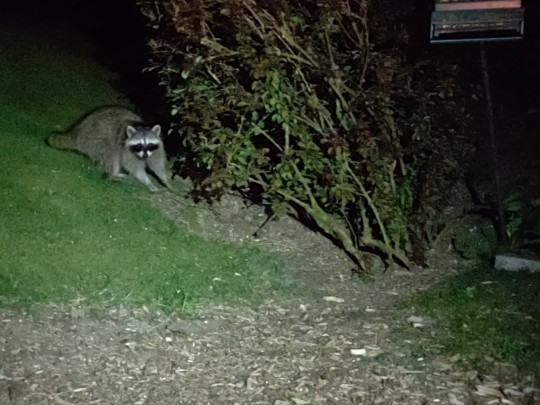
911 hello? There is a naked hairy little man in the yard
48 notes
·
View notes
Text




Fat Echidna found on Woppa (they do inhabit the island as well as the mainland).
Sadly, while driving to Yeppoon, we saw a lot of dead echidnas on the road... The highway is frequently covered in native animal roadkill. At least on Woppa, there's little chance of an echidna being runover.
BTW, despite looking like hedgehogs, they're very much unrelated. Echidnas are their own thing (closely related to the platypus).
11/09/23 - Mammalia: Tachyglossus aculeatus - Woppa, cabin area
#Tachyglossus aculeatus#Echidna#Monotremata#Monotremes#Mammalia#Mammals#Prototheria#Prototherians#Vertebrata#Vertebrates#Chordata#Chordates
115 notes
·
View notes
Text
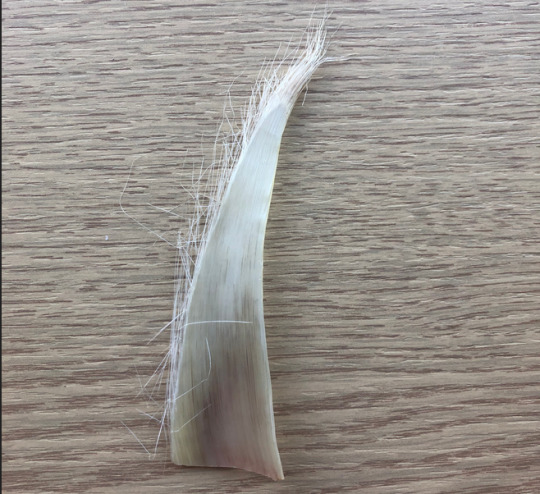
whale baleen moment! From a minke whale that had been beached ( :( ) and died ( :(((( ) (baleen collected by a marine mammologist, cleaned, and given to me)
Very small baleen, only about 10cm or so. baleen can be Metres Long though and that is so weird and cool!
Some fun facts about baleen:
1) made of keratin like human hair and rhino horns
2) grows continuously in fairly solid “sheets” which gain the feathery bristles (shown better right below) by grinding against other sheets of baleen (much like rat teeth, this grinding makes sure the baleen doesn’t get too big for the whale’s mouth!)

3) as the baleen grows and wears down continuously, a piece of baleen will have a temporal arrangement of molecules, in terms of when the whale consumed the molecule (and assimilated it into baleen growth)
that means a piece of baleen can be analysed to reveal the whale’s diet and where it has been living (though the assimilation rates of isotopes into the whale needs to be considered here) -- there have been studies into using this to get a better idea of how much pollution a whale has been exposed to so we can keep better track of their health!
ah... remember how I said this was small baleen? Well, the size of baleen can help you figure out how a whale feeds. there are three main types of feeding in baleen whales: lunge, skim, and sediment. Lunge feeding is when the whale rockets forward, opens its mouth, and takes a big gulp of water. Skim feeding is when the whale swims with its mouth open. Sediment/bottom feeding is when the baleen is used to comb thru the sea floor for critters. Long baleen with a high surface area is useful for skim feeding since it means you can have your mouth nice and wide to catch more things... but long baleen wouldn’t be great for digging around in the mud, so sediment feeders have short and robust baleen.
And this size difference can be HUGE! for context, here’s my stylishly-censored hand next to a skim feeder’s baleen. The little one next to it is closer to the minke whale baleen in the first and second image (though a bit bigger)... that’s a sediment feeder’s baleen !
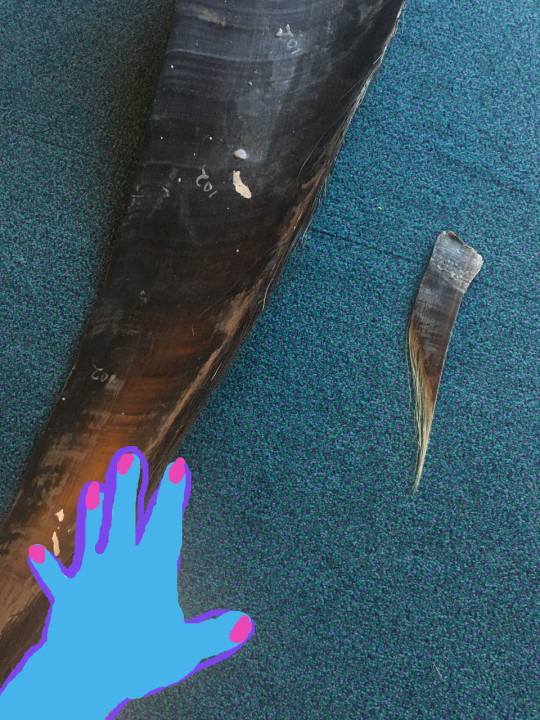
more about baleen whale feeding types here, because lunge feeding is fcked up lmao
#whale#baleen whale#cetaceans#marine mammals#marine biology#zoology#mammals#vertebrates#science#biology#sciblr#bioblr#baleen#miaow
86 notes
·
View notes
Text
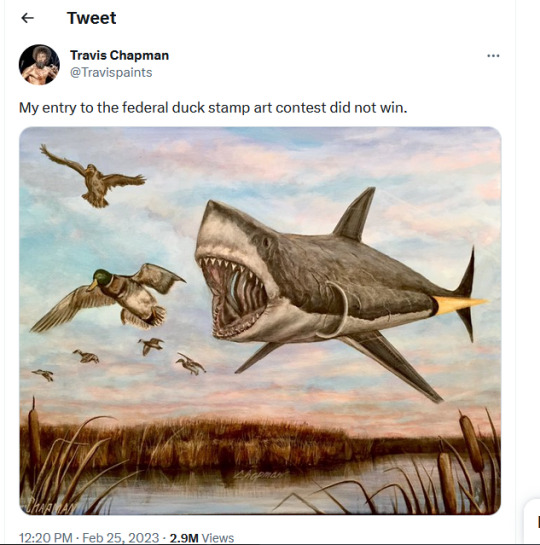
To be honest, if one of the students in my Junior Duck Stamp classes ever turned in something like this, I would be elated.
(For a bit of background--a few years ago the Federal Duck Stamp contest rules were changed so that artists HAD to include some element of waterfowl hunting in their entries, whether they were comfortable with it or not. The above artwork may be my favorite example of malicious--or at least snarky--compliance.)
#waterfowl#ducks#duck stamps#shark#artwork#malicious compliance#duck hunting#hunting#wildlife#birds#fish#vertebrates#nature#outdoors#snark#funny#humor
3K notes
·
View notes
Text
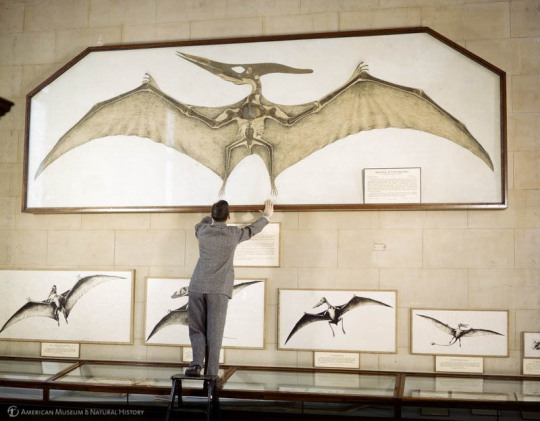
It’s a bird! It’s a plane! It’s… a dinosaur? Nope to all of the above. This Fossil Friday, let’s talk about pterosaurs—the first animals with bones to evolve powered flight. Though they were related to dinosaurs, pterosaurs evolved on a separate branch of the reptile family tree. They ruled the skies for more than 150 million years, evolving into dozens of different species. Some were as small as a paper airplane while others, like Pteranodon pictured here in the Museum's Hall of Late Dinosaurs circa 1940-1960, had a wingspan of more than 20 ft (6 m).
Along with other large pterosaurs, Pteranodon longiceps was first discovered in western Kansas, near a chalk formation called Monument Rocks. Today the region is dry, but at the time this species lived, about 85 million years ago, central North America was covered by a seaway. This large pterosaur likely spent its days flying over the sea. Unlike early species of pterosaurs, Pteranodon and many other Cretaceous-era species didn’t have any teeth. In fact, its genus name means “winged and toothless,” while the second name, longiceps, means “long-headed.”
Today, you can find Pteranodon in the Hall of Vertebrate Origins. We're open daily from 10 am-5:30 pm! Plan your visit.
Photo: Image no. ptc-217 © AMNH Library
#science#amnh#museum#dinosaur#fossil#nature#natural history#paleontology#animals#pterosaur#reptile#did you know#fact of the day#ancient animals#prehistoric animals#vertebrates#fossil friday#pteranodon#archives#flashback friday
638 notes
·
View notes
Text
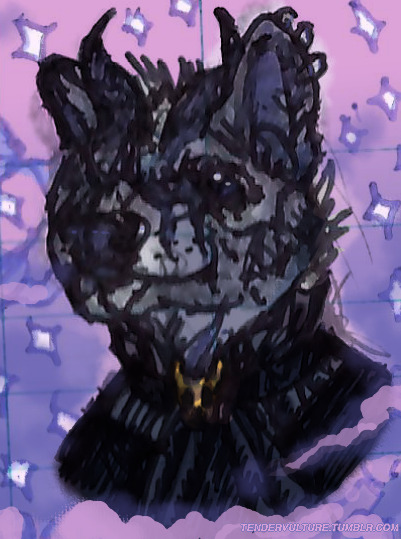
Felt sad, drew this handsome devil, felt better instantly :3
Quintessence ghouls real.
#the band ghost#aether ghoul#nameless ghouls#weirdfur#unglamored ghouls#anthro#greater noctule#batghouls#headcanons#character design#my designs#my art tag (abandon all hope ye who enter here)#fandoms#art#fanart#bats#mammals#animals#vertebrates#mine
12 notes
·
View notes
Text
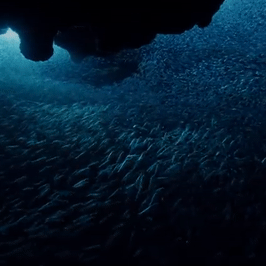

Fish Hunting with One of the Deadliest Sea Predators | BBC Earth
67 notes
·
View notes
Text

crocodilian head studies, to eventually aid in some paleoart.
#art#digital art#anatomy studies#animals#vertebrata#vertebrates#reptilia#reptiles#crocodylia#crocodilians#crocodiles
17 notes
·
View notes
Note
weird question, sorry if it doesn't make sense: are there any vertebrates, extinct ot extant, that aren't fish? (and when i say fish i mean in a monophyletic way. i think. basically i say fish i mean fish and amphibians and reptiles and mammals and so on and so forth)
Depends on if you count lampreys and hagfish
22 notes
·
View notes